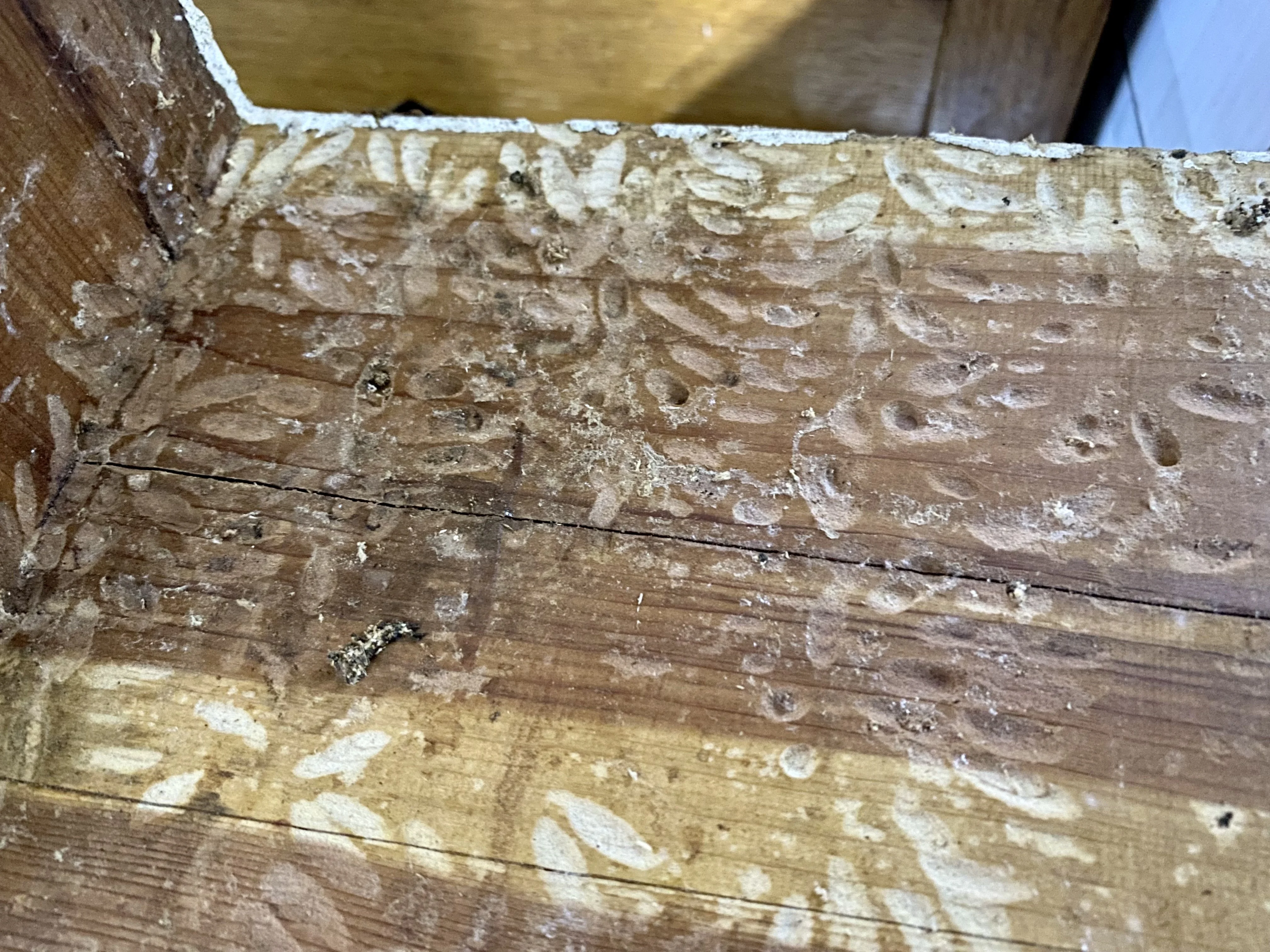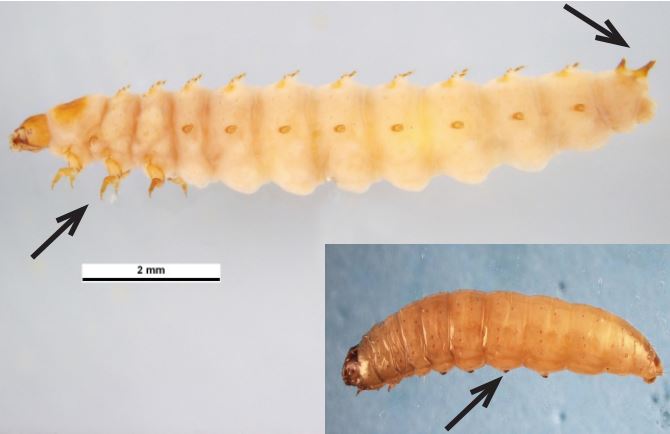r/Beekeeping Wiki
Wax Moth
There are two types of wax moth. Lesser wax moth, and Greater wax moth.
Both of these can be seen as natures “clean up crew”. When there is unattended comb, wax moth will crawl in, and burrow into it consuming all of the available nutrition inside the comb. Wax moth do a fab job of clearing out a disused hive but are very much a nuisance to beekeepers. Any unattended boxes of brood frames will be utterly destroyed, and taking along some of the woodenware with it too - they leave little divets in the wood where they have made a cocoon to pupate inside of.
 Image: Small divets in woodenware caused by wax moth cocoons.
Image: Small divets in woodenware caused by wax moth cocoons.
Controls for Wax Moth
There are a few ways to control wax moth and the damage they do:
Freezing
Once frames have been removed from a hive, they can be placed in the freezer where they must be completely frozen through for 24 hours - this usually means leaving them in for a couple of days, sometimes three. After which, the frames can be removed from the freezer, and stored inside their woodenware in sealed plastic bags or containers.
Bear in mind that frozen comb is extremely fragile.
Biological Control
A product called Certan can be used to spray onto the frames. Certan contains bacteria which are non-pathogenic to people and bees, but utterly devastating for catapillars.
Certan isn’t available in the UK, however other non-approved treatments can be found. We would at this point like to point out that it is not a good idea to use unlicensed treatments, and the reason we mention unlicensed treatments is because we don’t want you using them. There’s no guarantee that these are safe for A: your bees, or B: people - that’s why we have licensed products.
Chemical Control
There is a product called Paramoth available in some countries that can be placed in stacks of supers with stored comb. It is a type of mothball and is very strong smelling. It evaporates over time and will need to be checked/replaced every month or two. You will need to air out your comb for several weeks after storing with Paramoth to get rid of the odor. There are unlicensed chemical equivalents to Paramoth, but again, it is best to stick to the labeled/licensed product. Paramoth contains Para-Dichlorobenzene. Some mothballs contain napthalene. Under no circumstances should you use napthalene products when storing bee equipment. It can be harmful to bees and people.
Is this a small hive beetle larvae or a wax moth larvae?
SHB larvae (main image) have three pairs of legs near the head and two large spines projecting from their rear and spines along the length of their bodies. Wax moth larvae (inset) have abdominal legs like a caterpillar (see arrow) and have no body spines.
